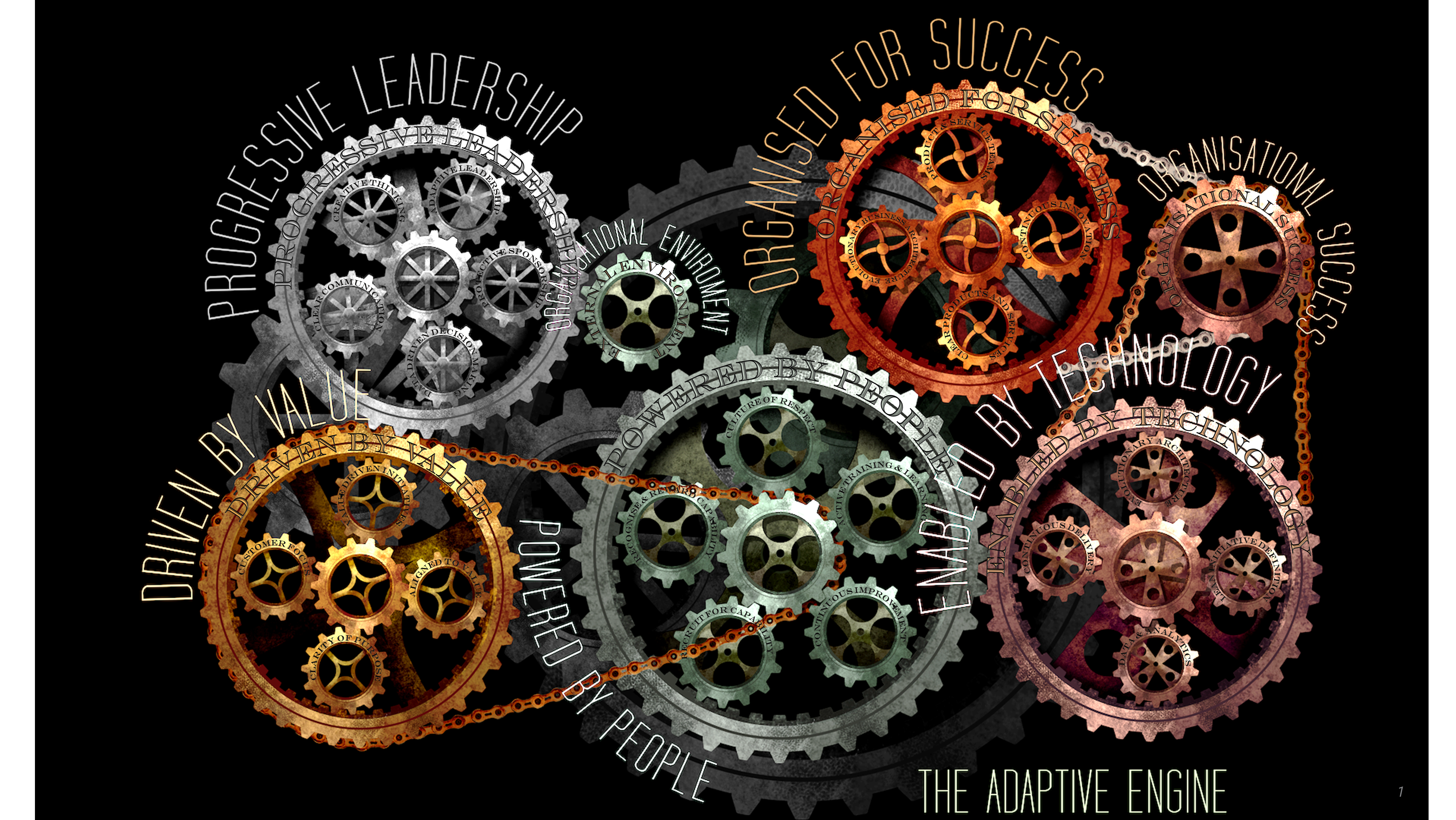Those of you who have been following us from the start of the Adaptive Organisation earlier in the year will probably remember the original picture that we used to help describe what good looks like from an organisational characteristic perspective. This original model contained 14 characteristics arranged into 3 layers: Executive, Design and, Deliver.
This original picture was always intended to be a first version (an MVP if you like) aimed at getting valuable feedback to help us further develop the model and concept. In this regard an a number of others, this picture was highly successful. Some key feedback was that the picture was too complicated, and fundamentally baked in the idea of organisational hierarchy, a concept we were always very uncomfortable with ourselves. A critical issue was that it implied that you could make changes in 1 part of the organisation, without impacting or being limited by the other parts of the organisation – something with which we do not agree and never intended to imply!
In response to this we have created a new model for ‘organisational goodness’ which takes into account the complex nature of organisations in a more simplified form, while demonstrating the interconnectivity of organisational characteristics and their elements. We call this new model the ‘Adaptive Engine’ and have chosen a mechanical model as this allows us to use concepts such as Drag, Momentum, Resistance and Gearing when discussing the creation of an adaptive organisation. The Adaptive Engine has just 7 characteristics, 5 of which break down into a number of elements – here it is! If you want to see the details drag the picture out to enlarge.

Again, this is our MVP of this new model so we will continue to review it as it gets more use. Over the next few posts we will elaborate on the characteristics and their elements and welcome your feedback!